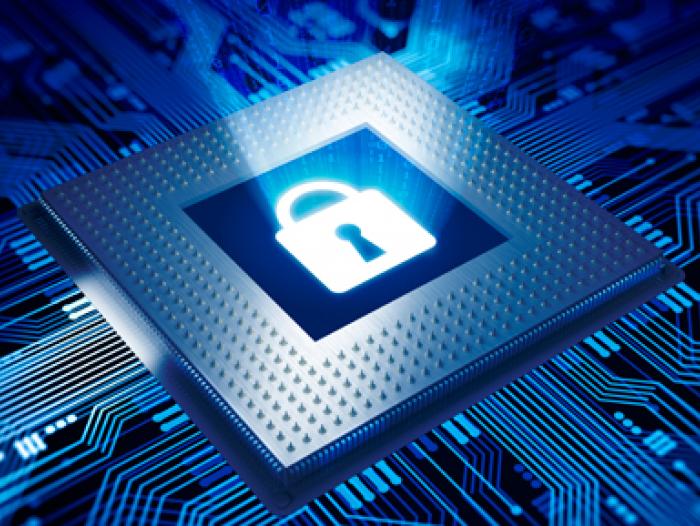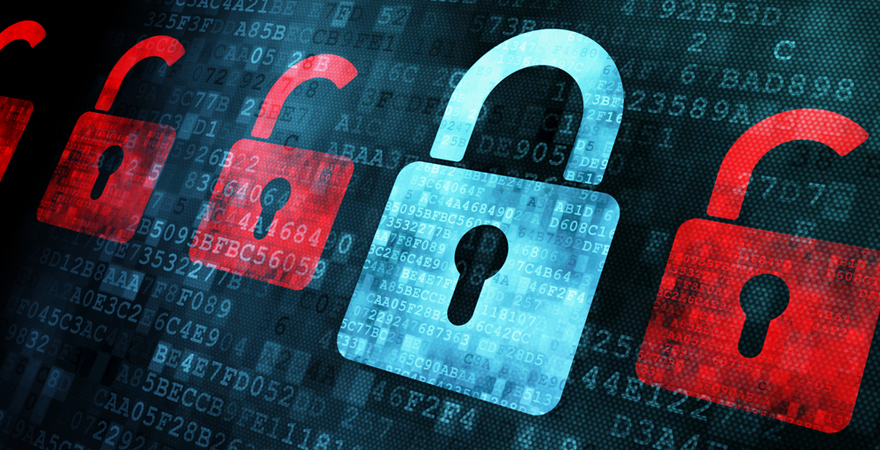
por Rebeca | Oct 26, 2022 | Ciberseguridad
Every company must face the new cybersecurity challenges and for this there is a new approach. «Developing a fully integrated strategic approach to cyber risk is fundamental to manufacturing value chains as they align with the operational technology (OT) and IT environments—the driving force behind Industry 4.0«, Deloitte said recently.
With the advent of Industry 4.0, threat vectors are expanding. That is why new risks must be considered and addressed. The main objective will be to implement a safe, vigilant and resilient cyber risk strategy. When supply chains, factories, customers, and operations are connected, the risks of cyber threats increase. The risks are enhanced and have a greater scope, he added.
Adopting new approaches and challenging conventional thinking is essential in an increasingly digitized world. “In terms of security, if we’re not moving forwards and developing, then we are effectively going backwards because our adversaries will definitely be moving forward,” commented Johnson (partnerships and outreach manager (digital and STEM), founder and director of Women in Cyber Wales)
Technology change has been beneficial to both organizations and its employees. The adoption of technological innovations by organizations has skyrocketed in recent decades. increase global spending on technology across all industries.
The adoption of new technologies brings many benefits to the company. At the same time it comes with risks and free threats. The new technology must fit perfectly into the business. If the right fit is not ensured the sustenance will be at large risk.
The adoption of new technologies to overcome cybersecurity challenges
New technology while adopting create internal conflict in an organization. They are such as managerial, Technological, sociological and economic related. There are several attributes of conflicts and they are usability, interoperability, common business views, agility, scalability, reliability, openness, manageability, infrastructure and security. Here Security assumes major role.
With data breaches continuing to pose a threat to any emerging technology, it’s critical to think about a good investment in cybersecurity. The increase in technology exists in any type of business, from health care, finance, manufacturing, services or any other. In order for these companies to be able to exploit them efficiently and prosper, they must put into practice cybersecurity policies and practices.
It is necessary to adequately analyze the security risks of the technology that will be implemented. In addition, before institutionalizing technologies, effective strategies must be implemented.
Why Security Standards Are Important
Conformance with established standards and best practices is essential for increasing the protection baseline in cybersecurity. Many organisations lack personnel experienced in the domain and, therefore, have a hard time adopting new approaches and techniques. Education is an important component, but in-depth knowledge is hard to transfer.
Thus, certification methodologies that distil certain best practices into structured, easy-to-apply guidelines have an important role in the proliferation of cybersecurity innovation.
The Evolution of Threat Hunting
Threat hunting continues to evolve for organizations that focus on proactively detecting and isolating Advanced Persistent Threats (APTs) that might otherwise go undetected by traditional, reactive security technologies.
While many SOCs are struggling to cope with the current security threat workload, more organizations are adopting threat hunting as part of their security operations. They are discovering that proactive threat hunting can reduce the risk and impact of threats while improving defenses against new attacks.
Source:
(1) cyber-security.com
(2) cio.com
(3) Deloitte.com
(4) cybersec4europe.eu
Picture: Vector de Fondo creado por pikisuperstar – www.freepik.es

por Rebeca | Oct 25, 2022 | Ciberseguridad
Cyber resilience refers to the ability to protect electronic data and systems from cyberattacks. As well as to quickly resume business operations in the event of a successful attack. According to Statista, 37% of organisations globally became a victim to a ransomware attack in 2021. Additionally, 68.5% were victimised by ransomware – an increase on the previous three years.
Companies now must find intelligent ways of reducing digital footprints across cybersecurity quicksand to ensure their environments are secure. Cyberattacks are a serious threat to each of us. Because attackers could try to hack into a private computer or an organisation for economic gain or simply for demonstrative purposes. Generally their goals are simply to cause harm and disruption.
This threat has to be taken seriously by banks, financial institutions, and financial market infrastructures (such as payment or settlement systems). But cyberattacks are not only a threat to individual institutions. Given the high level of interconnectedness within the financial sector, they can also pose a threat to the stability of the overall financial ecosystem.
The Australian Securities & Investments Commission share some Cyber resilience good practices.
In an increasingly digitized world where cyberattacks are growing at an alarming rate, it is hard to imagine running a business without a comprehensive cyber resilience strategy. With the shift towards hybrid work, cyberattacks are an unfortunate reality for businesses of all shapes and sizes. Attacks leveraging social engineering and other techniques are increasingly effective, which means no organization is safe.
A solid program enables you to prepare for and effectively respond to and recover from such attacks. A cyber-resilient organization can protect its core business functions against cyberattacks and ensure business continuity during and after a disruptive incident.
Do We Need a Cyber Resilience strategy?
Cyber resilience is highly beneficial for your organization. By improving the overall security of the company, it is protected from serious harm such as financial loss, loss of sensitive data and cyber attacks. Additionally, it helps protect your brand reputation by enabling you to efficiently manage cyber risks. It helps improve your organization’s corporate culture and business processes, thereby reducing risk and enhancing security in the process.
A cyber resilience plan helps you comply with complex legal and regulatory requirements. This technique minimizes business interruptions and downtime. At the same time, it allows business operations to continue during and after an incident. When put into practice, any cyber resilience strategy must require a preventive measure. In this way, the effect of human errors, software vulnerabilities or incomplete or poorly executed configurations is prevented.
Therefore, the goal is to protect the organization. No matter how strong the security controls are, there will be insecure parts.
How Can Cyber Resilience Be Improved?
Here are four methods that you can use to strengthen your organization’s cyber resilience:
- Automation.
- Implement Stringent Security Protocols.
- Make Cyber Resilience a Part of Your Corporate Culture.
- Back Up Your Data.
Sources:
(1) asic.gov.au
(2) spanning.com
(3) itgovernance.eu

por Rebeca | Oct 6, 2022 | Ciberseguridad, Recursos
Identity and Access Management (IAM) helps ensure that only authorized people have access. No one else, have access to the technology resources they need to do their jobs.
Due to the COVID-19 pandemic, many companies have grown uncontrollably. So no longer have enough time and resources to control and manage the access that each user should have to carry out their daily activities. This has created gaps in security that can be disastrous for companies.
This is why managing the life cycle of identities is so important. Since it allows establishing an identity governance model focused on the needs of each company. Likewise, being able to automatically manage tasks such as the creation, deletion, modification and auditing of users. All in the respective applications used in companies.
Why is so important IAM?
Today, nearly 100% of advanced attacks rely on exploiting privileged credentials to reach a target’s most sensitive data and applications. If abused, privileged access has the power to disrupt your business. In the face of these modern threats, it is clear that identity has become the new security battlefield. An “assume breach” mindset, based on Zero Trust principles, is absolutely essential. But while cyberattacks are inevitable, the negative business impact is not.
Keep your company safe with the help of a Security and Identity Management strategy
Organizations that apply identity management avoid vulnerabilities derived from improper access by users or the appearance of orphan accounts, among others; that, in short, allow access to the organization’s systems by users who should no longer be able to do so for different reasons. A good identity security strategy is based on the principle of least privilege, whereby users are given only the minimum levels of access necessary to perform their job functions.
The principle of least privilege is generally considered a cybersecurity best practice and is a critical step in protecting privileged access to high-value data and assets.
key benefits of identity management for businesses
Identity access and management is useful in many ways, because it helps you ensure regulatory compliance, promotes cost savings and simplifies the lives of your users, due to the improvement of their experience. These are the main benefits of having an IAM solution:
- Easy access anywhere
- It favors the connection between the different parts
- Improve productivity
- Optimize User Experience
Do you want to keep your company safe?
Picture: Imagen de Freepik

por Rebeca | Ago 10, 2022 | Ciberseguridad, Noticias
Digital technologies make it easier and more efficient to deliver patient care and provide better outcomes. However, the rise of digital technologies and the growing interconnectedness between different healthcare systems come with increasing healthcare cybersecurity threats.
Weak cybersecurity measures expose companies to serious risk. Victim companies suffer operationally, as systems are rendered unusable. In addition, it affects your reputation, because customers lose trust. And, since the regulators are strict, they end up legally affected, too.
The healthcare industry is particularly vulnerable because it uses extremely sensitive data. For example, pharmaceutical companies store proprietary scientific data and intellectual property. Medical device companies develop systems that interface such devices with physician, patient, and medical entity data collection.
Additionally, operational functions are often literally matters of life and death. Breaches in healthcare and pharma cost more than those in almost any other industry.
After Covid-19, healthcare cybersecurity risk is higher than ever
Cyberattacks grabbed headlines throughout 2021 as hacking and IT incidents affected government agencies, major companies, and even supply chains for essential goods, like gasoline. For healthcare, this year was even more turbulent as cybercriminals took advantage of hospitals and healthcare systems responding to the Covid-19 pandemic.
More than one health care provider was forced to cancel surgeries, radiology exams, and other services, because their systems, software, and/or networks had been disabled
The COVID-19 crisis will continue to test the resiliency of the global healthcare industry.
What can healthcare organizations do to address the challenges?
Strategies include the following:
- Implementing cybersecurity technology
- Building a talent pool of professionals skilled in healthcare cybersecurity. Do you know about cybersecurity skills?
- Developing a healthcare cybersecurity strategy focused on patient privacy protection
- Addressing vulnerabilities in legacy systems in healthcare
- Keeping tabs of new developments to understand information technology (IT) challenges
By introducing cybersecurity as a value proposition and formulating clear action plans, healthcare organizations can meet cybercriminals fully armed — and give them a worthy response. See how Soffid can help you stay ahead of the curve in a rapidly evolving digital world. Let’s talk!
Sources:
(1) Security Magazine
(2) Contentsecurity.com
(3) Infosecuritymagazine
(4) Forbes
Imagen:Foto de doctor feliz creado por pressfoto – www.freepik.es

por Rebeca | Ene 5, 2022 | Ciberseguridad, Soffid

Cybercriminals
Throughout 2021, global news seemed to ricochet between the rapid spread of new iterations of COVID-19 and cyber criminality — both becoming increasingly creative and disruptive as they mutate in a battle for survival; both interlinked as cybercriminals profit from rapid digitalization forced by COVID-19 lockdowns. In a recent interview, a prominent cybersecurity executive pointed out that alongside birth, death and taxes, the only other guarantee in our current lives is the exponential growth of digital threats.
Because security is not built into new technology from the ground up, cyber criminals quickly get a foothold and cause untold damage before we can catch up.
Much has been said about the cybersecurity skills shortage. Millions of cybersecurity positions are unfilled, and this is causing serious problems at many organizations. Cybercriminals the magnitude of the skills shortage is based on a specific model of doing security. This model is reactive rather than proactive and takes a labor-intensive, “brute force” approach to threat response. We need more bodies in cybersecurity because our methodology is to “throw more bodies at the problem.”
For example, rather than doing threat modeling and building strong, proactive controls as they develop an application, organizations scan for vulnerabilities, manually analyze the scans and manually remediate the problems — or else let the vulnerabilities accumulate. Cybercriminals this consumes a lot of resources and ultimately does not leave an organization significantly safer than if it had done nothing.
Moving Beyond Brute Force

While most people may see the logic in moving beyond this scattershot approach, it has an incredibly strong gravitational pull. IT governance policies at many organizations require the use of antiquated security technology and processes when other approaches would provide better protection using fewer resources. At the same time, the rapidly evolving marketplace means that development teams face continual pressure to crank out applications even faster than they do today. This makes it easy to rush into development rather than taking the time to architect an application to be secure before coding even begins.
But what if we were to break from the gravitational pull of reactive security and refocus on what really matters? We could build security into new technologies as they are developed, rather than adding it as an afterthought. We could become consistent, prioritized, focused, structured and strategic in the use of people, processes and tools. help developers learn to write safer code by providing real-time feedback.
At the same time, we need to be making security more visible. If users had an idea which software was safer and which was less safe, they would choose accordingly. The White House issued an executive order in May that can potentially move us in this direction. For example, it requires software vendors to provide a “Software Bill of Materials”. Something of an “ingredients list” for an application. We need dramatically more information about why we should believe something. Secure before we trust it with important things — like elections, finances and healthcare, for example.
Proactive cybersecurity strategies
Aggregate a multitude of perspectives, which brings the benefit of innovation, problem-solving and consensus-building.
From the growing adoption of distributed cloud to the proven benefits of remote mobile workforces. The attack surface for bad actors is ever-widening. This means the requirements for network security have also evolved with the growing threats of increasingly distributed systems.
Security should not take a backseat to innovation in digital businesses. Of course, innovation and speed will require businesses to build secure systems, which means we can no longer afford to implement security only at the service level. We need to apply adaptable solutions from the architecture level that will change with digital business requirements.
See how Soffid can help you stay ahead of the curve in a rapidly evolving digital world. Let us know how we can help you
Sources:
(1) Forbes
(2) Information Week








